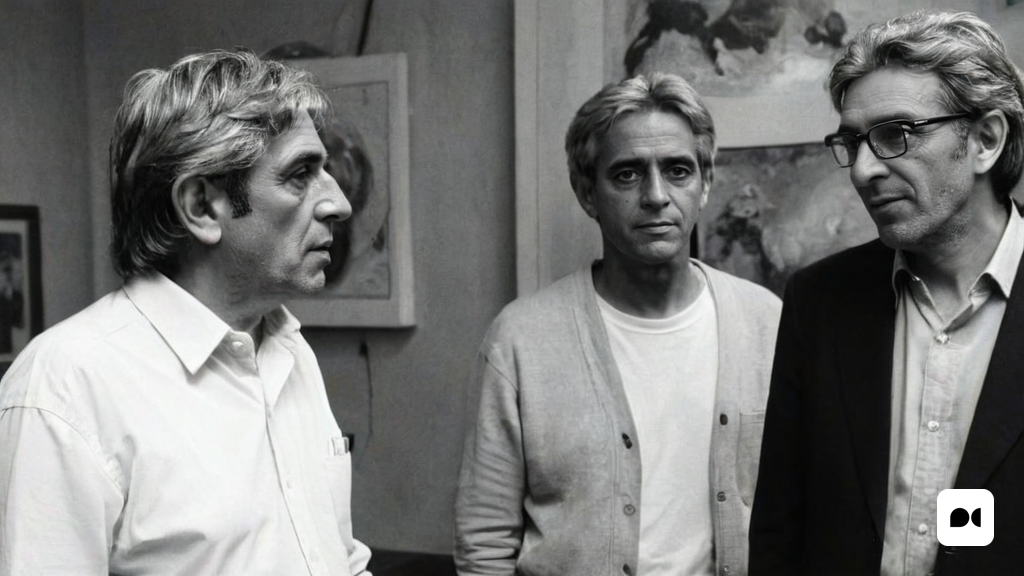Editions 3 and 4 publish the letters that Joan Fuster and Raimon sent to each other for nearly 30 years
Edicions Tres i Quatre has published the letters that the writer Joan Fuster and the singer Raimon sent to each other over the course of almost 30 years, from the sixties to the nineties of the last century.
This work, volume 230 of the ‘Correspondence of Joan Fuster’, also collects the missives that the author of Sueca exchanged with other representatives of the ‘Nova Cançó’, as reported by 3i4 in a statement.
In the letters “we witness the birth of the Raimon phenomenon and the Nova Cançó, we discover the faith that Fuster had in the singer from Xàtiva and in the singers who would join him immediately, able to reach with their voice, with the sung word, far beyond where the written word could reach”, emphasize those responsible for the publication”. The volume has been prepared by Rafael Xambó, professor of Sociology at the University of Valencia and singer-songwriter.
At the same time, apart from the epistolary relationship with Raimon and his wife Annalisa, the work also brings together the letters that Fuster exchanged with other names in the world of New Song, such as Maria del Carme Girau, Josep M. Espinàs , Ermengol Passola, Ovidi Montllor, Vicent Torrent, Quico Pi de la Serra or Pep Laguarda.
In addition, as an appendix, the book includes a selection of Fuster’s texts on the New Song edited by Xavier Hernàndez, of the Joan Fuster Chair at the University of Valencia and scholar of Fuster’s relationship with music.
These are texts that the Valencian essayist published either in the periodical press or accompanying the albums that the singer-songwriters published – either on the back cover, in a folder or in a notebook. Likewise, a fragment of the biography dedicated to Raimon in 1964 is also included.
From Tres i Quatre they state that Fuster wrote thousands of letters, some of which are of great value both for their content and for their high literary quality, and many others, the majority, circumstantial, marked by the contingency of the day up to date and the demands of his job as a writer and of his status as a committed intellectual -“with the language and the country, with the problems and concerns of his time”-, as a public man, of ” father of the country”.
He himself was aware of the interest of his vast epistolary for future readers and scholars, and not only did he keep neatly everything he received – letters, cards, telegrams, handwritten notes delivered under the door, circulars, printed matter, invoices, warnings, insults, threats – but he made copies of the letters he sent, and hence the majority of them were typewritten and not handwritten.
“Priceless” material
All this huge material is “priceless to get to know the writer and his work better, to also understand his public projection, his literary, cultural, civic and political dimension”, they underline.
Taking into account this documentary, historical and literary value, Edicions Tres i Quatre began publishing the Joan Fuster Correspondence in 1997 with Antoni Furió – professor of Medieval History at the University of Valencia – as director of the project and, from his creation, with the collaboration of the Joan Fuster Chair of the University of Valencia.
Each volume is dedicated to collecting the epistolary with a correspondent or a set of correspondents linked by a thematic axis. Since then, 20 volumes have been published that bring together Fuster’s letters with characters such as Josep Pla, Josep Carner, Marià Manent, Salvador Espriu, Carles Riba, Agustí Bartra, Vicenç Riera Llorca, Aina Moll, Francesc de Borja Moll, Eulàlia Duran, Teresa Lloret, Josep M. Castellet, Xavier Casp, Miquel Adlert, Ernest Martínez Ferrando, Joan Triadú, Josep M. Llompart, Manuel Sanchis Guarner, Vicent Ventura, Joaquim Maluquer or Josep M. Castellet.
About this blog
Culture section of the Valencian edition of elDiario.es.

